The overall aquaculture production of the Ilocos Region in 2022 improved by 4.27 percent from 156,188.72 metric tons in 2021 to 162,777.58 metric tons. All the provinces, except Ilocos Norte, posted an output gains.
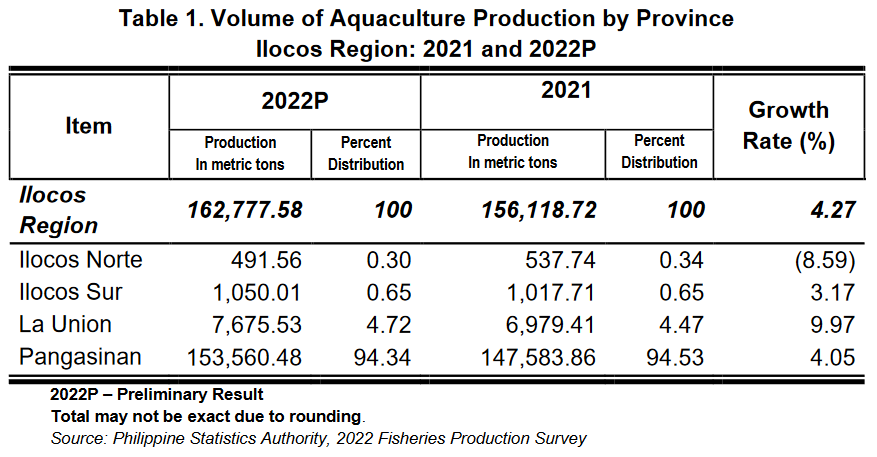
Pangasinan contributed most of the aquaculture production of the Ilocos Region, sharing 94.34 percent of the output at 153,560.48 metric tons. La Union followed with 7,675.53 metric tons, equivalent to 4.72 percent of the region’s production. Meanwhile, both Ilocos Norte and Ilocos Sur contributed less than one percent of the total output at 0.30 percent and 0.65 percent, respectively.
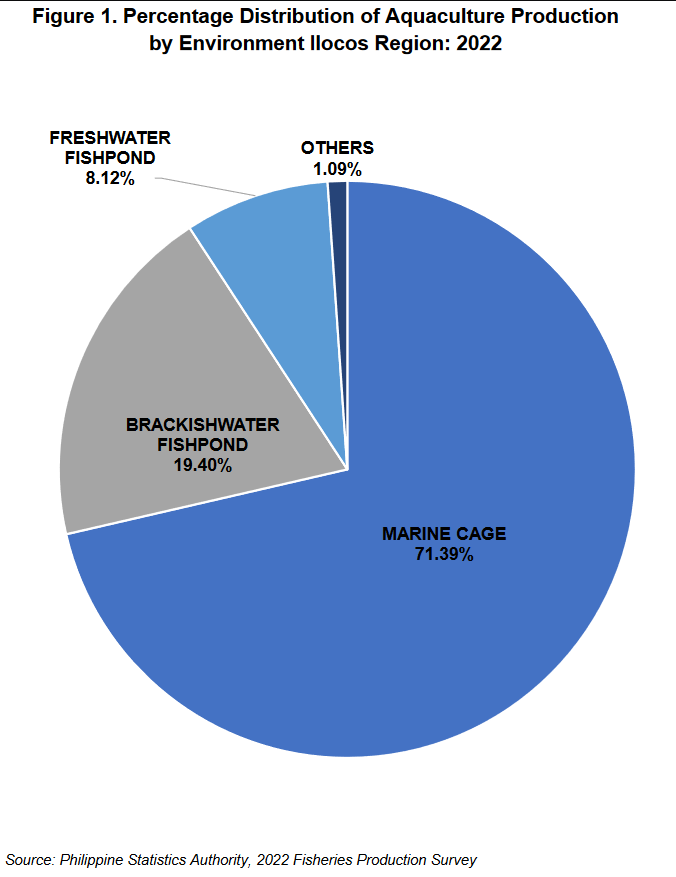
Across Ilocos Region, the bulk of the harvest in 2022 was from marine cages which contributed 71.39 percent of the aquaculture production in the region. Next were brackishwater fishponds, and freshwater fishponds at 19.40 percent and 8.12 percent, respectively.
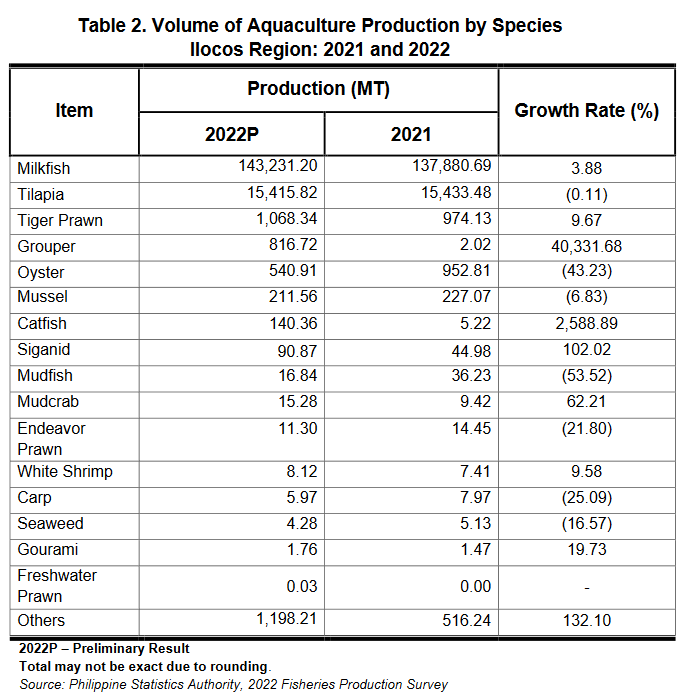
By fish species, milkfish was the most cultured fish in the Ilocos Region. About 88.00 percent of the region’s aquaculture production was milkfish. Tilapia contributed 9.50 percent of the output, while all other species registered at 2.5 percent.
According to the growth rate per species, the harvest of grew significantly at 40,331.68 percent growth. Fish species with more than doubled production from 2021 include catfish and siganid. On the other hand, the fish species with a negative growth rate were tilapia, mussel, seaweed, endeavor prawn, carp and oyster.
Aquaculture by Province
Ilocos Norte
Predominantly, most of the harvest in Ilocos Norte was from freshwater fishponds. The said aquafarm shared 45.81 percent of the province’s aquaculture production. This was followed by brackishwater cage, and freshwater cage at 31.13 percent and 10.20 percent, respectively. Other aquafarms shared 12.86 of the output.
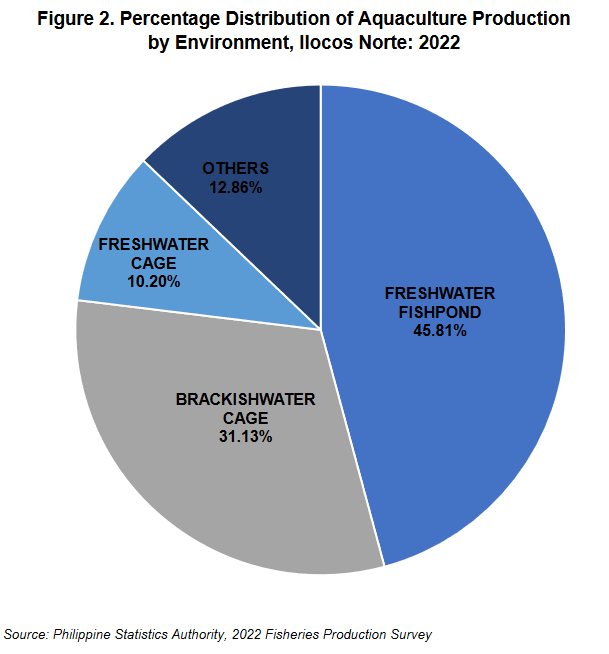
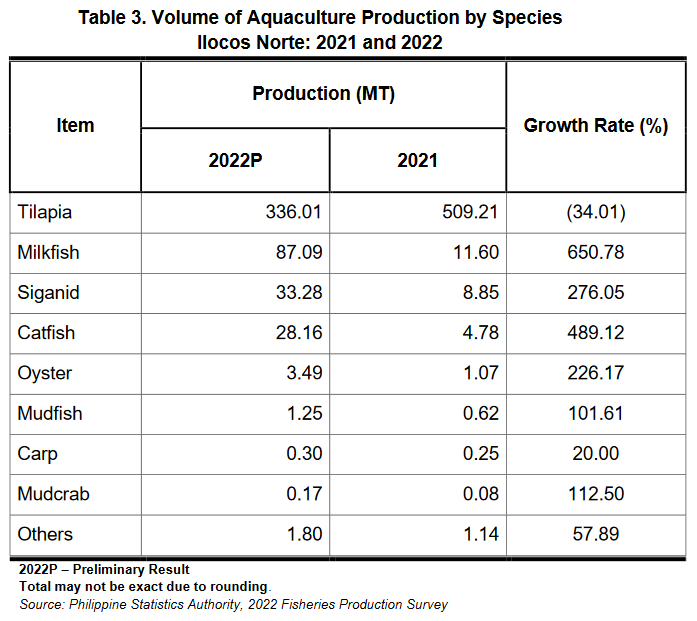
The top species of Ilocos Norte in 2022 were tilapia at 336.01 metric tons, milkfish at 87.09 metric tons, and siganid at 33.28 metric tons. The least were carp and mudcrab with production not more than 0.50 metric tons.
In terms of growth rate, all fish species, except tilapia, registered an increase in production, where milkfish has the highest increase followed by catfish. Tilapia, the top fish species in the province, declined by 34.01 percent in production.
Ilocos Sur
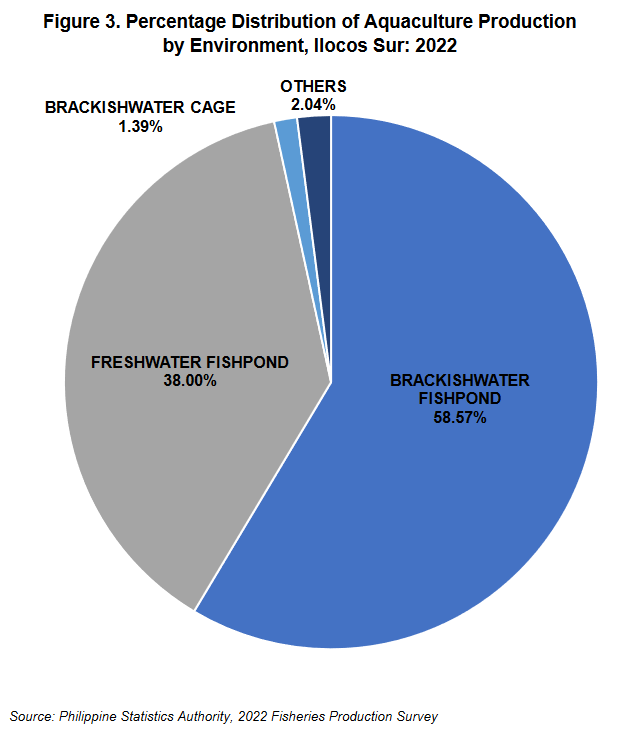
Brackishwater fishpond dominated Ilocos Sur’s aquaculture production in 2022 and contributed 58.57 percent of the province's output. Freshwater fishpond followed at 38.00 percent. Meanwhile, 1.39 percent of the output was from brackishwater cages. Other aquafarms covered 2.04 percent.
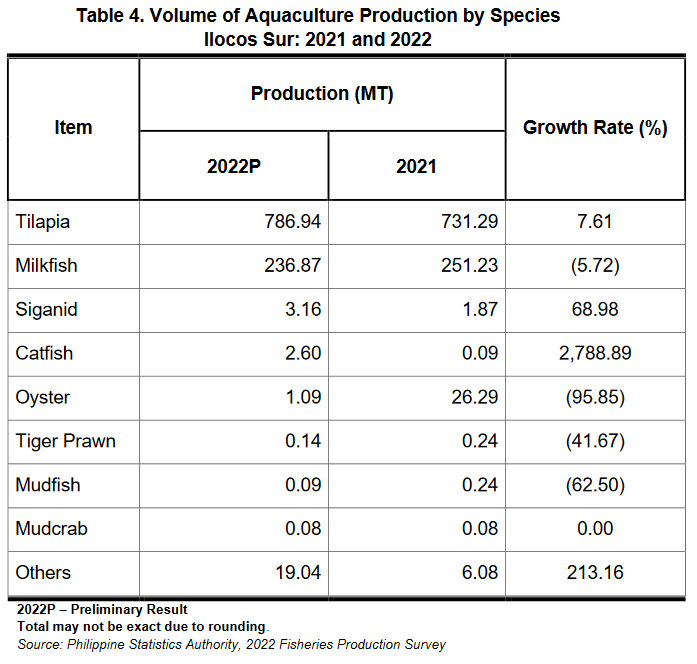
Ilocos Sur’s aquaculture production was composed of 74.95 percent of tilapia, 22.56 percent of milkfish, 0.30 percent of signid, and 2.19 percent of other fish species.
Production of catfish in Ilocos Sur improved from 0.09 metric tons in 2021 to 3.16 metric tons in 2022. Tilapia, siganid, and other fish species posted increases in production, while mudcrab remained stable. However, harvests of oysters, tiger prawns, mudfishes, and milkfishes declined.
La Union

By aquafarm type, 72.72 percent of La Union’s aquaculture production was from brackishwater fishponds. Meanwhile, marine cages, and brackishwater pens contributed 17.39 percent, and 5.49 percent, respectively. Other aquafarms produced 4.40 percent of the output.
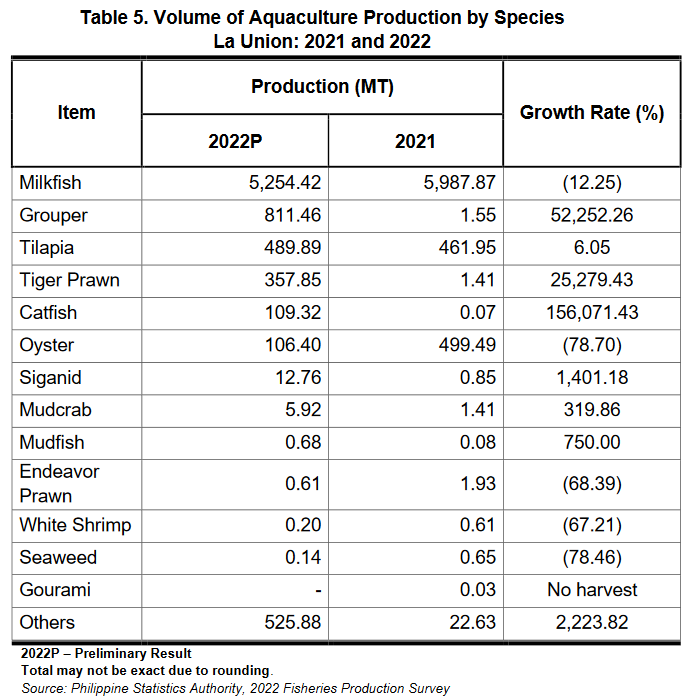
About 68.46 percent of La Union’s aquaculture production was milkfish. Sharing 10.57 percent of the provincial output was grouper. Meanwhile, tilapia contributed 6.38 percent. Other fish species shared 14.59 percent of the output.
Multiple fish species in La Union recorded increases in production from aquaculture namely; catfish, grouper, tiger prawn, and siganid. On the other hand, milkfish posted a decrease in production in 2022 by 12.25 percent. Other identified fish species with decreased production were oyster, seaweed, endeavor prawn, and white shrimp.
Pangasinan
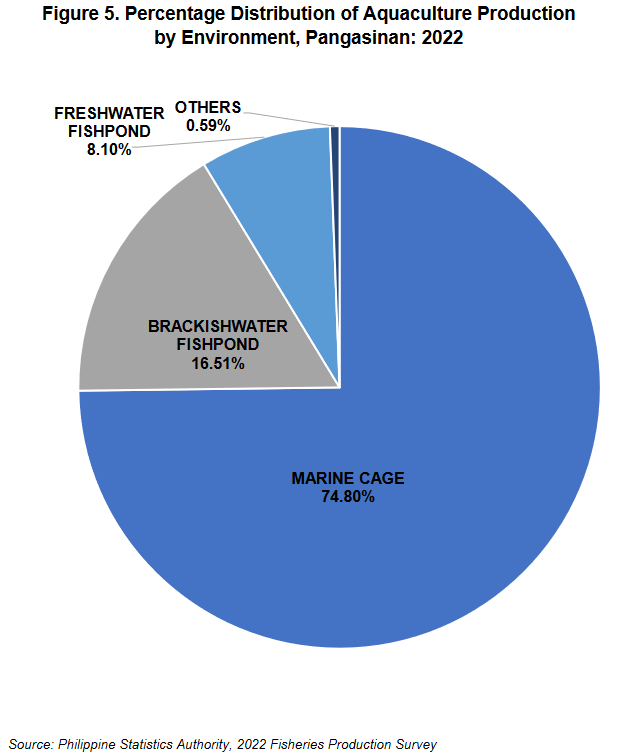
Pangasinan’s marine cages contributed 74.80 percent of the province’s aquaculture production. Marine cages were followed by brackishwater fishponds, and freshwater fishponds at 16.51 percent, and 8.10 percent, respectively. Other environments produced 0.59 of the province’s output.

The production of aquaculture in Pangasinan was composed of 89.64 percent of milkfish, 8.99 percent of tilapia, 0.46 percent of tiger prawn, and 0.91 percent other fish species.
Production of grouper in 2022 increased from 0.33 metric tons to 5.26 metric tons. Other than grouper, the magnitude of growth rate of other species was less than 100 percent wherein the decrease in mudfish was the highest at 57.98 percent.
SGD. ATTY. SHEILA O. DE GUZMAN
Regional Director, RSSO I

